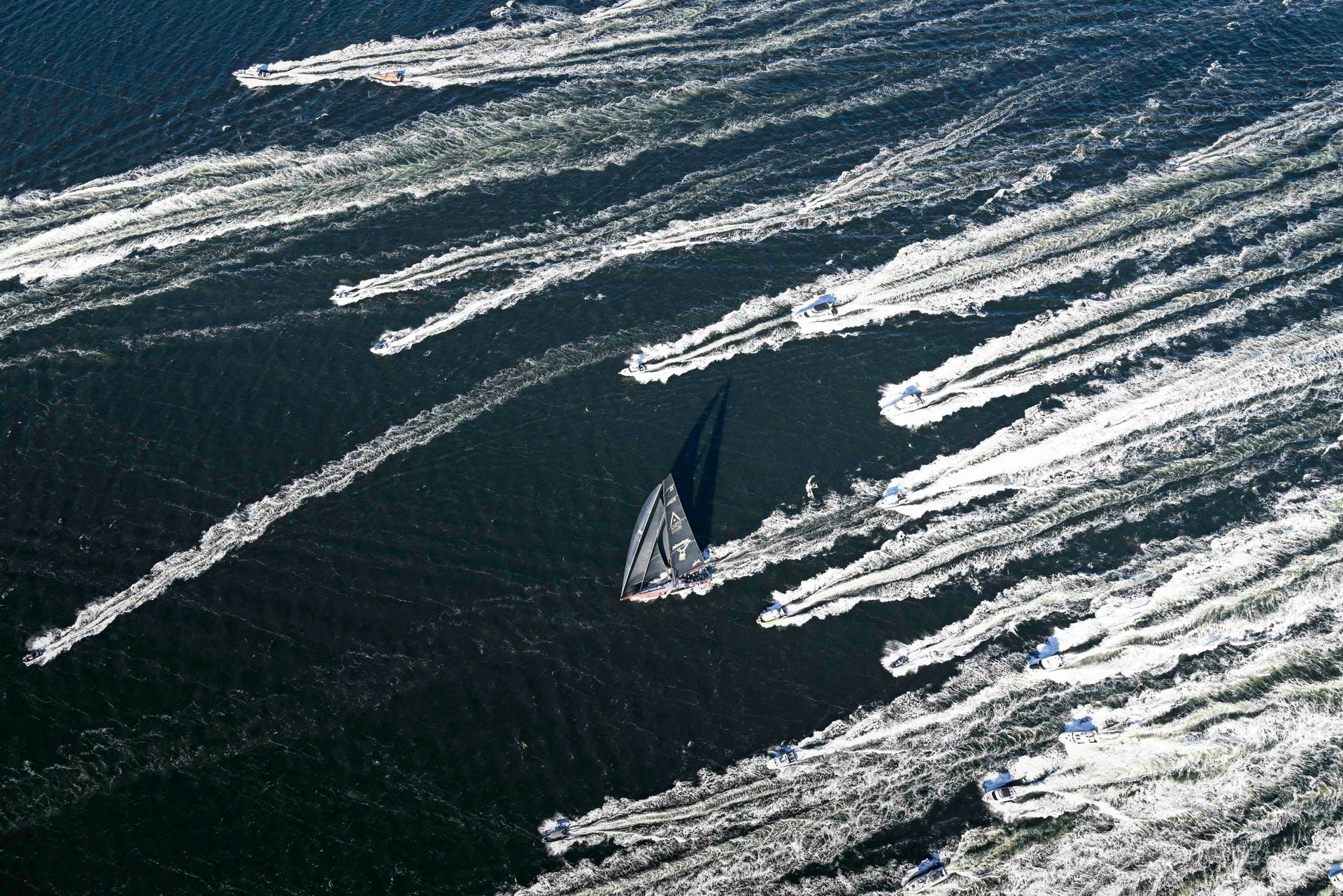SPEED READING: ONBOARD COMMUNICATION
ONBOARD COMMUNICATION
The Chain of Command

By Reed Baldrige
On board communication for racing yachts is a key factor for performance, no matter what type of sailing. However, when the number of crew increases, it becomes more and more important. Offshore one-design boats typically have 6-12 people which requires a lot of communication and coordination. Below are some suggestions to keep your boat moving through the water and around the corners more efficiently and effectively with better communication.
Here are the positions onboard following proper chain of command:
The Tactician
Starting from the top, there is the tactician, or head of the afterguard, is the one who gives the overall plan, talking to the whole crew and communicates directly with the helmsman in close quarter situations, such as the start and mark roundings. Ultimately the tactician is responsible for where the boat sails through the water, and how it sails, telling trimmer what type of mode is best for the boat.

The Trimmers
Next, the primary trimmers, who are the voices in control when sailing in a straight line. When sailing upwind, the main trimmer, who is usually the only other crewmember besides the skipper facing towards the middle of boat and sitting next to the helmsman, is constantly talking with helmsman about how the boat feels to each other. When sailing off the breeze it is the spinnaker trimmer who takes over keeping the boat in the grove.

The Boss
Now you may be asking yourself, what about the boss? The skipper? This is the most important part. It is crucial that the skipper communicates to his or her trimmers about how the boat feels, how much the tiller or wheel is pulling or pushing. Knowing these characteristics of how the boat feels can help the trimmers do their job more effectively, as they can adjust accordingly to get the boat to feel good and in the groove.
Many times it is hard for helmsman to speak up because there is a lot of conversing going on between trimmer, tactician and the bow, while also trying to focus hard on driving straight, knowing that if they were to veer off course a quick course change command is coming from their trimmers. But nevertheless it is crucial to tell your trimmers how the boat feels. Good trimmers should be asking frequently about how it feels to make sure the boat is maintaining a good course through the water.

The Middle
Moving forward in the boat, is what I like to call the middle. This includes headsail trimmers, grinders when you have them and the pit, which can be multiple people. Communication from this part of the boat is non stop and travels both ways.
Communication can be difficult on larger boats and/or in windy conditions. The crewmembers on the bow need to know what the next maneuver is going to be so that they can prepare or get the proper hardware ready.

The Bow
The bow, typically made up of the crew who operate at or in front of the mast who deals with the hoisting and lowering of all headsails.
Communication coming front to back is also crucial, such as an obstruction that is behind the jib or an issue onboard your own boat needing attention before the next maneuver can be executed. Many times, in challenging conditions, hand signals can be used to express the readiness or state of the bow prior to a maneuver.

Overall, the golden rule is that too much communication is always better than not enough, and yelling or scolding your crew only slows down the process of any maneuver.
Most importantly: keep the boat fun, keep the boat fast!









